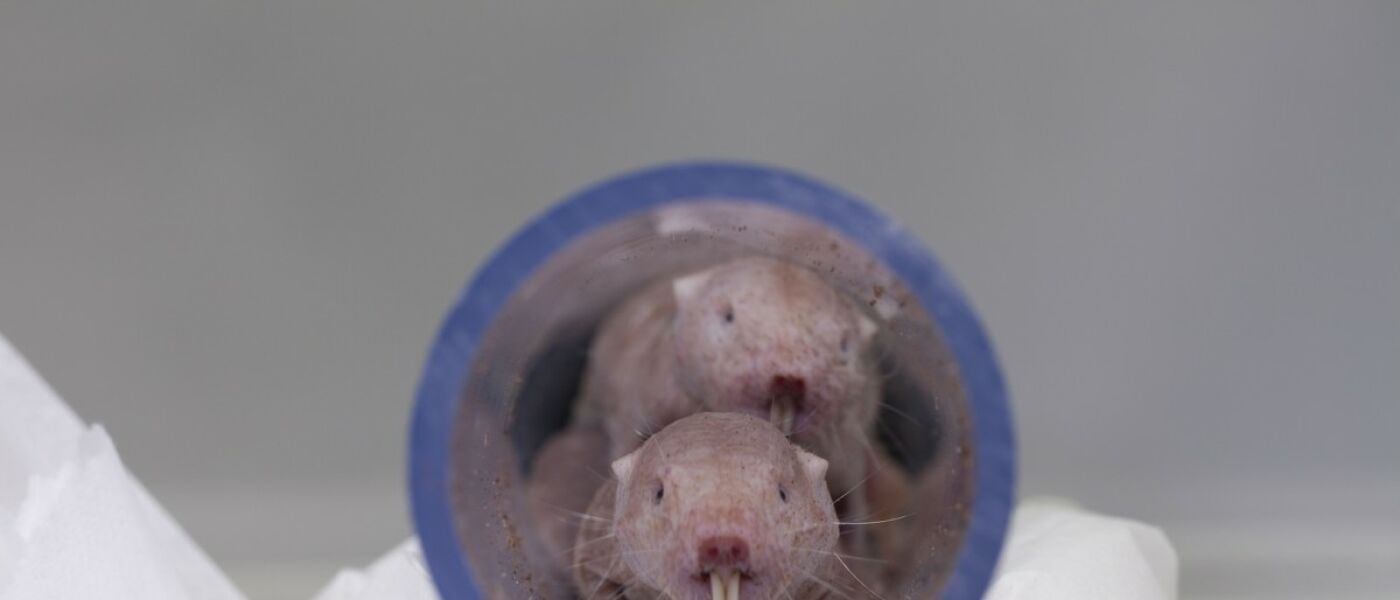Naked mole rats have arrived at Liberty Science Center
Please join us in welcoming Liberty Science Center’s newest residents: the naked mole rats! Following a journey from the Pacific Science Center in Seattle, they just moved into their new digs – our Eat and Be Eaten gallery on the third floor – and they’ve got everyone buzzing with excitement.
From their bald, wrinkly appearance to their inexplicable health, naked mole rats are among the strangest – and most extraordinary – creatures you will ever see. You can even check in on them via our new live stream.
It’s possible that you only know about naked mole rats via cartoon characters (such as Rufus, the crime-fighting sidekick on Disney Channel’s Kim Possible). But in fact, naked mole rats are more fascinating than anything on television. Here is what you need to know:
- Naked mole rats are unusually healthy. They can live up to 32 years, which is extremely long for an animal of their size. Mice, for example, live at most for two years.
- They almost never get cancer. Biologists hope that by studying mole rats, they can learn to create medicine that prevents cancer in people.
- As if they didn’t sound healthy enough… mole rats are also immune to the aging process. Even as they grow older, mole rats remain active and youthful until the end of their lives. Google is even conducting a study involving mole rats to unlock the secrets of aging.
- Naked mole rats spend the majority of their lives underground, working together to build tunnels and nests. That’s why their eyes are so small – because they barely use their sense of sight. They’re not blind, though.
- Despite their name, naked mole rats aren’t really naked. They have sensory whiskers, or tiny hairs, to help them find their way in the dark.
- A mole rat’s incisor teeth can be moved independently of each other and even work together like a pair of chopsticks.
- Like ants and bees, naked mole rat colonies have a queen – a single female who produces all the offspring. The other mole rats in a colony are nonreproductive, and work as soldiers, tunnel diggers, or caregivers.
- Sometimes mole rats eat each other’s poop. But there’s actually a good reason for it: Doing so helps them identify members of the same colony.
Come meet our naked mole rat colony soon! Their appearance may startle you at first, but we promise you’ll end up just as fascinated by them as we are.
You can also check out a 360° video of our naked mole rats. Get an inside look at their habitat:
